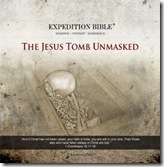In this month’s BiblePlaces Newsletter, I commented on the tremendous value of the Survey of Western Palestine (published in the 1880s). Unfortunately these dozen (or so) volumes are very expensive in reprint form (about $6,000), and it is almost impossible to find the originals for sale. In about a decade of active searching, I think I’ve only seen it for sale once. But this week, another copy popped up. You’ll have to travel to the Netherlands or pay a good bit for shipping, but it’s currently for sale for about $7,000. That includes the 26 sheets of the map, which itself costs about half of that (when it is available).
Many of the volumes are now available for free online in pdf format:
An Introduction to the Survey of Western Palestine: Its Waterways, Plains, & Highlands (1881), by T. Saunders (pdf)
The Survey of Western Palestine: Memoirs of the Topography, Orography, Hydrography, and
Archaeology: Galilee (Volume 1) (1881), by C. R. Conder and H. H. Kitchener (pdf)
The Survey of Western Palestine: Memoirs of the Topography, Orography, Hydrography, and
Archaeology: Samaria (Volume 2) (1882), by C. R. Conder and H. H. Kitchener (pdf)
The Survey of Western Palestine: Memoirs of the Topography, Orography, Hydrography, and
Archaeology: Judea (Volume 3) (1883), by C. R. Conder and H. H. Kitchener (pdf)
The Survey of Western Palestine: Jerusalem (1884), by C. Warren and C. R. Conder (pdf)
The Survey of Western Palestine: The Fauna and Flora of Palestine (1885), by H. B. Tristram (pdf).
The Survey of Western Palestine: Arabic and English Name Lists Collected during the Survey
(1881), by E. H. Palmer (pdf)
Not Presently Available:
Special Papers on Topography, Archaeology, Manners and Customs, etc. (1881), by C. Wilson, C.
Warren, C. R. Conder, et al.
The Survey of Western Palestine: Memoir on the Physical Geology and Geography of Arabia Petraea
(1886), by E. H. Hull
Survey of Eastern Palestine: Topography, Orography, Hydrography and Archaeology: The Adwan
Country (1889), by C. R. Conder
Available from BiblePlaces.com:
A General Index to The Memoirs, Vols. 1-3; The Special Papers; The Jerusalem Volume; The Flora
and Fauna of Palestine; The Geological Survey; and to the Arabic and English Names List (info, pdf)
Map of Western Palestine in 26 Sheets from Surveys Conducted for the Committee of the Palestine
Exploration Fund, by C. R. Conder and H. H. Kitchener (1880). The CD edition also includes the
map from the Survey of Eastern Palestine (info, order)
Forthcoming from BiblePlaces.com:
Excavations at Jerusalem 1867-70 (50 Plates), by C. Warren.
